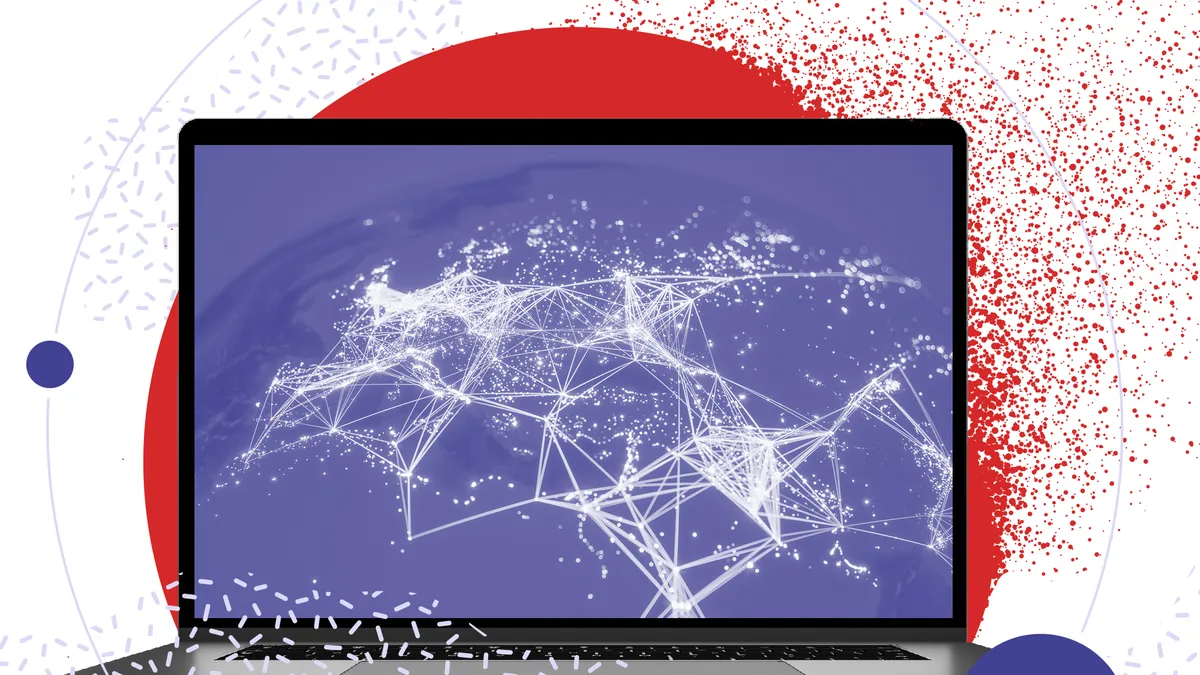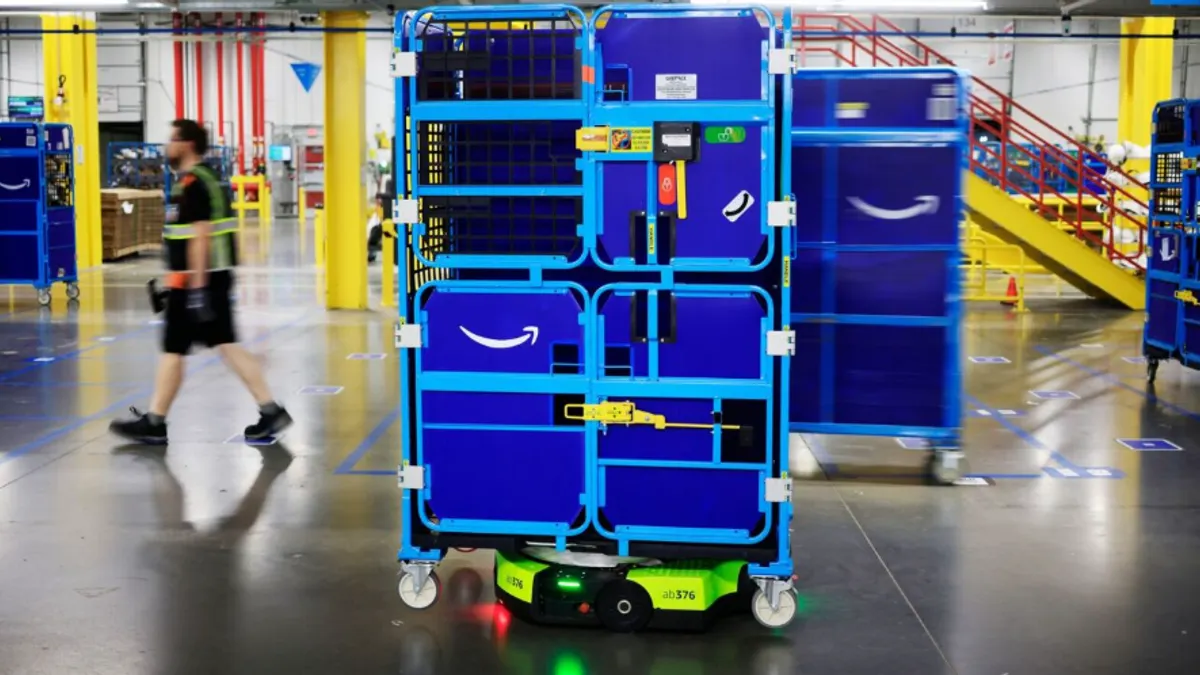Vendors and advocates dreaded enterprise flight on blockchain implementation when the pandemic hit.
Relatively new territory for business leaders, blockchain adoption risked being first to the chopping block amid economic contraction, reduced IT budgets and an all-hands-on-deck attitude as companies pivoted to distributed work.
"There was a lot of fear, if I'm being honest, that this would just kill implementation," said Paul Brody, EY Global Blockchain Leader.
Though no radical changes have hit blockchain adoption, the technology's landscape did undergo a shift, Brody said. The bar for delivering value is rising, and "wheat is being separated from the chaff" in what was once a crowded vendor field.
Similar to trends in data and software, focus in blockchain implementation in COVID-19 times shifted to the areas where technology can deliver the most value in the shortest amount of time.
Steering away from flashy pilots without clear intent, leaders target their interest on areas with higher value propositions — especially in supply chain, where the pressures of the pandemic further deepened existing weaknesses.
"Supply chains are complex but shallow," said Rajesh Kandaswamy, chief of research and Gartner Fellow at Gartner. "Can blockchain be one of the technologies that can help with that need? That is something that enterprises will look to, they might look at it more, but we have to wait. It's still unclear."
The COVID-19 effect
Funding for blockchain pilots slowed in the aftermath of the crisis as leaders paused forward-looking projects to put out fires. Already existing networks in finance, supply chain and healthcare pushed forward, supporting systems placed under new stressful conditions.
As global IT budgets shrink, worldwide blockchain spend is projected to reach $4.3 billion in 2020, or 57.7% year-over-year growth from $2.7 billion in 2019, according to projections from IDC released in June. Despite the growth projection, it's a 7.7% contraction from IDC's last forecast.
By 2023, global blockchain budgets are now predicted to reach $14.4 billion, a further contraction from the pre-COVID-19 estimate of almost $16 billion.
Actual impact on blockchain adoption has been low, according to Kandaswamy. One trend is that interest in pilots and proof of concepts without clear business returns has fallen.
"There's still interest and investments in, and adoption of, blockchain, because it perfectly addresses some of the issues that the coronavirus has identified."

James Wester
Research director of Worldwide Blockchain Strategies at IDC Insights.
Running blockchain networks operating successfully prior to the pandemic continue to roll forward despite the disruption.
"We have seen that in many cases companies where there's a blockchain project that's budgeted, and where partners are aligned, those projects are continuing," said Kandaswamy.
One example of blockchain systems that continued in the pandemic was IBM's Food Trust, a permanent, shared record of food system data. The app connects information from farmers and traders in a single system.
Walmart Canada also leveraged blockchain to track deliveries, verify transactions, and automate payments and reconciliation between the retailer and third-party trucking companies. The technology, built by DLT Labs, helped the brand cut the prevalence of invoicing disputes or discrepancies with trucking companies from up to 70% down to under 2%.
The supply chain advantage
The first, and crucial, piece of context when assessing the shift in blockchain adoption after COVID-19 is the instability of the economic environment.
"Things can change quite rapidly," said Martha Bennett, VP and principal analyst at Forrester.
When the first wave of lockdowns hit North America and Europe, almost all blockchain work initially paused, save for networks already in production, said Bennett. In organizations with large IT departments, with better set up for distributed work, projects kept going.
"We have seen that in many cases companies where there's a blockchain project that's budgeted, and where partners are aligned, those projects are continuing."

Rajesh Kandaswamy
Chief of research and Gartner Fellow at Gartner
"But that was really [the] minority," Bennett said. Some large vendors and software integration firms told Bennett people weren't taking phone calls as businesses shifted focus to enable remote work.
In particular use cases and industries, the momentum for blockchain actually increased. "Not surprisingly, most pronounced in anything to do with supply chains," said Bennett. The pandemic exposed supply chain challenges, including:
- How little companies know about where their supplies come from, and where they're located at a specific time
- The way supply chains are linked together, making it a challenge to locate alternative supply sources in the face of disruption
The technology's design suits a crisis like the coronavirus pandemic, curbing some of the effects of economic pullback and budget constraints. Vulnerabilities in the supply chain and issues around tracking food supply present themselves as good use cases for blockchain, according to James Wester, research director of Worldwide Blockchain Strategies at IDC Insights.
"Because the resiliency of blockchain and decentralized systems actually addresses this, we're seeing that enterprise interest and spend, while it's a little flat in the short-to mid-term, comes back pretty well," Wester said. "There's still interest and investments in, and adoption of, blockchain because it perfectly addresses some of the issues that the coronavirus has identified."
A pilot cool off
When considering blockchain implementation, enterprise tech leaders must often pare back hype from vendors and proponents of the technology.
The promises of trust-based systems and decentralized transactions seemed larger than life just a few years ago. By 2019, just 4% of organizations had blockchain projects up and running at scale, according to Gartner.
In the current landscape, in which IT leaders face pressures to slim down their budgets, any blockchain project without a "very clear reason for being" risks shutdown, Bennett said.
As companies evaluate the merits of a blockchain pilot, clear benefits criteria include:
- Reduce costs
- Easing compliance
- Fewer staff needed for performing a given task
- Reducing the amount of time it takes to sort through issues, which improves liquidity
In the wake of the pandemic, some leaders paused as they assessed the impact of the crisis on their companies, said Sergei Beliaev, EVP and chief strategy officer at DLT Labs.
In the short term, this meant leaders "probably weren't as willing, and probably won't be willing for the next short little while, to be investing into innovation," Beliaev said.
"If we talk about just exploring blockchain as a technology, as bits and bites, we've seen and we will see a slowdown with those kinds of projects and proofs of concept," Beliaev said. But for blockchain implementation as a component of platforms that can improve supply chains and reduce costs, interest is on the rise.
Blockchain fits the challenges of the pandemic well, said Beliaev. It has the ability to provide companies with an immutable version of truth that's highly auditable in real time.
Delivering those benefits has proven elusive to the majority of enterprise. Even those networks currently in place will need to be replaced as technology evolves, in order to "remain competitive, secure and avoid obsolescence," according to Gartner.
"There was a lot of fear, if I'm being honest, that this would just kill implementation."

Paul Brody
Global blockchain leader at EY
As businesses adapt to the new operating environment, blockchain provides a way for businesses to reduce the cost of accessing data reliably among partners and set aside non-value-added costs.
To efficiently pursue blockchain as part of their digital transformation journey, CIOs need to identify which aspects of their business and operating models can be automated to better serve customers, said Kandaswamy.
Organizations should assess which combination of solutions can help deliver on that result. In this scenario, blockchain can connect with artificial intelligence or internet of things. "The key difference from before is: Don't look at blockchain as one thing offering multiple capabilities," Kandaswamy said. "Rather try to see the different capabilities of blockchain and try to fit them into your business needs."
























